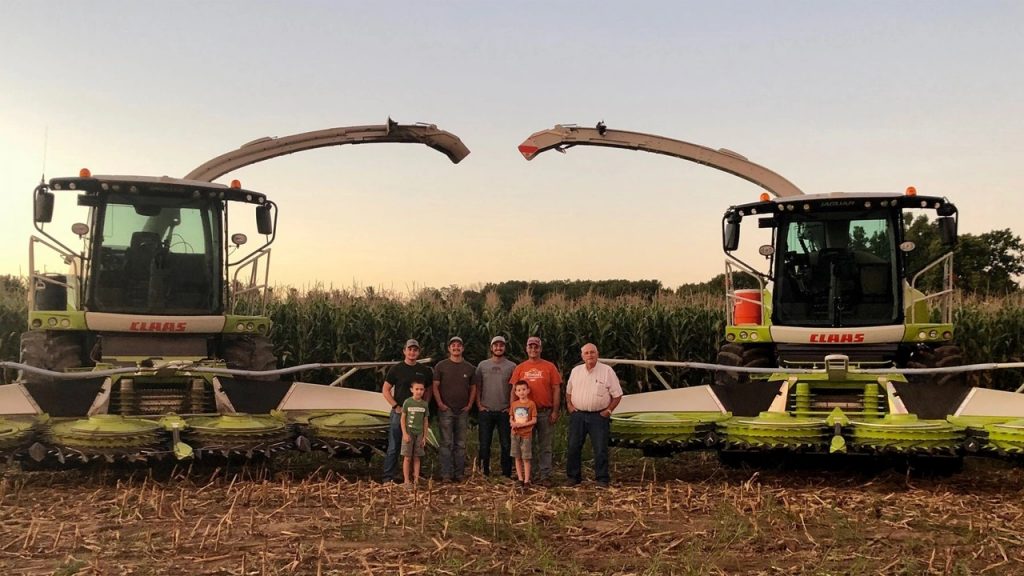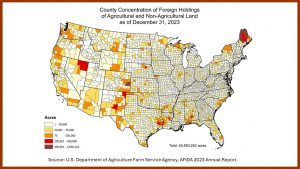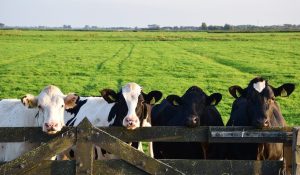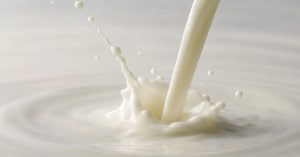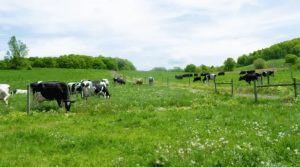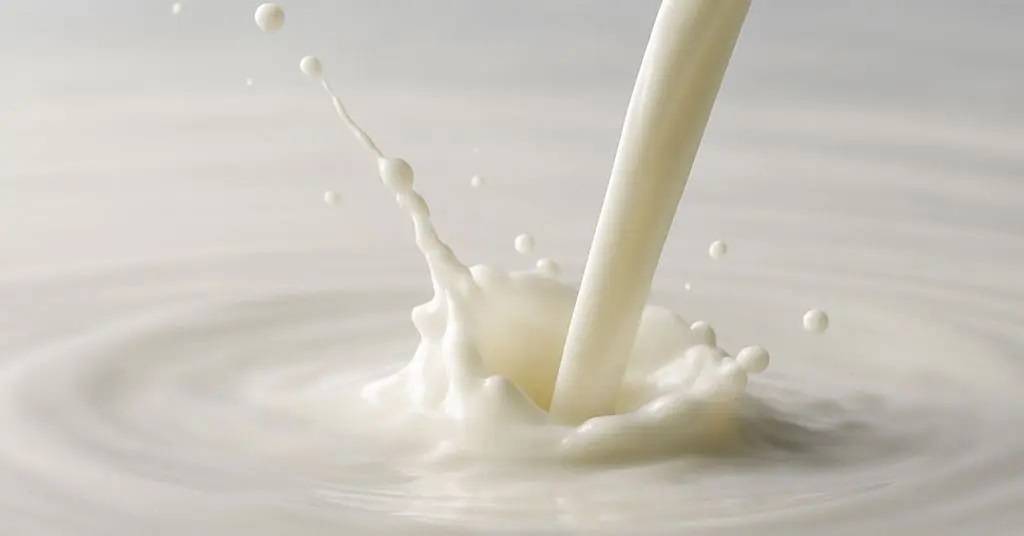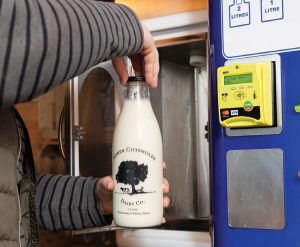
Sand Creek Dairy focuses on producing top-quality forage and silage to maximize milk production efficiency.
Alfalfa harvest is coming, and at Sand Creek Dairy in Hastings, Mich., those 8 a.m. to midnight shifts in the forage harvester will soon be a reality. But it’s worth it to get the best feed for the farm’s 1,200 head of Holsteins and Jerseys.
“Really, our focus as a dairy is just trying to maximize the production and the efficiency with the ground that we got, and the cattle that we’ve got,” says Ethan Haywood, the sixth generation of his family on the farm.
How do they do it? By growing the best forage and silage possible, he says. Brown midrib (BMR) corn is one example. While it costs more and doesn’t yield as well as conventional silage, Haywood says it produces much better milk quality.
“It’s going to cost us the same to milk those cows, to take care of those cows, and so we can see a better return on our investment with the better feed we put in on the front end,” he says.
The dairy took the same approach five years ago when it planted low-lignin alfalfa. They grow 700 acres of alfalfa and some mixed grass hay. Alfalfa is just about ready to be harvested.
Lignin, a complex carbohydrate found in plant cell walls, is indigestible, so reducing it increases overall digestibility and nutritional value. Haywood says it also lessens the effects of feeding concentrates in the total mixed ration.
“I think it allowed us to put more forage into the diet,” he says. “If we can get a couple percent more alfalfa … the more that it reduces digestive upsets. We monitor those pretty closely. We have a rumination monitoring system. If we can get more high-quality alfalfa in there without giving up any pounds of milk, just because it’s very digestible … it allows us to maximize our milk production.”

FORAGE HARVEST BEGINS: The machines were out in force earlier this week at Sand Creek Dairy in Hastings, Mich. The farm averages five cuttings of alfalfa and four cuttings of mixed grass hay. First cutting is the highest yielding, but subsequent cuttings are where quality is most important. (Photo courtesy of Sand Creek Dairy)
Aggressive for quality
When forage is ready to cut, the machines are out in force.
“For first cutting, the second we see any small bud formation, we will be out there cutting,” Haywood says. “And we will shoot for cutting everything 24 to 25 days later, although with low lignin we can stretch that to 26 or even 29 days.”
First cutting is usually in the middle of May on the farm’s light, sandy soils. About 20% of the farm’s alfalfa is irrigated, so later cuttings still yield well. But quality is consistently better on nonirrigated fields.
“We just have to have a lot of acres of it and know that with the ground that we’re dealing with, sometimes the yield can be quite low,” Haywood says. “Last year, it was fantastic because we got rain pretty much the day after we chopped every cutting, but that’s not typical for us.”
The farm averages five cuttings of alfalfa and four cuttings of mixed grass hay.
First cutting is the highest yielding, but subsequent cuttings are where quality is most important.
“We’re quite aggressive when it comes to the actual harvesting,” Haywood says. “We’re very sensitive to moisture. Every field is getting tested for moisture, and it’s a lot of small fields, so we’re running two … cookers, running moisture samples all the time. Between my two brothers and I and my dad, if it’s a really dry cutting, we’ll wait until the dew falls at night and cut it at night to try and keep some leaf on there.
“Sometimes we’ll follow the mowers right with the merger if we need to, or if we need to let it set a full day to jump around fields, then we’ll come back. No two cuttings are the same because we’re trying to optimize every individual field in order to optimize the whole pile.”

CORN STILL CRUCIAL: The farm planted 1,400 acres of corn this season, split between silage and grain. All corn is irrigated and was planted the last week of April. Most of the corn ground had a rye cover crop planted with smaller acres of oats and radishes. It will be harvested the first week of September. (Photo courtesy of Sand Creek Dairy)
The farm grows 1,400 acres of corn split between silage and grain. All corn is irrigated and was planted the last week of April.
“It certainly dried out quite quickly here in Michigan this spring,” Haywood says.
Prepping that ground started long before planting. Everything with silage truck traffic got ripped last fall. Half the ground was dragline-manured at that time; the rest was draglined last month. All the ground then gets chisel-plowed to remove compaction with a high-speed disk following for finishing.
Most of the corn ground had a rye cover crop planted with smaller acres of oats and radishes.
“We are very aggressive with seed varieties and getting the right BMR varieties out there,” Haywood says. “We do extensive test plots every year for performance.”
Late-season fungicides — applied via helicopter, drone or plane — have been another constant, he says, even before tar spot became a management issue.
Nutrient management depends on the topography of the ground, but generally, Haywood says, liquid manure goes out ahead of the crop with a sidedress anhydrous ammonia or dry nitrogen application in June.
“As the season progresses, we’ll pull tissue samples every few weeks to search for problems with the corn. We can apply micronutrients through the pivots, if needed,” he says.
Soil sampling is done on a three-year rotating basis. Pre-sidedress nitrate test samples are pulled on all sidedressed fields.
Silage is usually harvested first week of September.

ALL ABOUT THE MILK: The hard work and attention to detail on the ground is all about producing the best-quality milk at Sand Creek Dairy. “We try to push for over 7.5 pounds of butterfat and protein per head each day, with some months 8 pounds,” Ethan Haywood says. The farm averages 4.63% butterfat and 3.34% protein. The Jerseys average 70 pounds of milk, while the Holsteins averaging 100 pounds. (Photo courtesy of Sand Creek Dairy)
All about the milk
The hard work and attention to detail on the ground is all about producing the best quality milk.
“We try to push for over 7.5 pounds of butterfat and protein per head each day, with some months 8 pounds,” Haywood says.
Right now, the farm averages 4.63% butterfat and 3.34% protein. The Jerseys average 70 pounds of milk, while the Holsteins averaging 100 pounds.
“We focus on quality,” Haywood says. “We haven’t had a month of over 100,000 SCC [somatic cell count] in the past 13 months. I really focus on milk quality,” he says.
The farm racked up the ribbons at last year’s World Forage Analysis Superbowl at World Dairy Expo, taking home grand champion in the mixed/grass haylage category; second place in BMR corn silage; third in standard corn silage; and fourth in alfalfa haylage.
And while that recognition is important to Haywood, the real reward comes at the end of each month, when the milk check arrives in the mailbox.
“It feels like a lot of extra work, but then we spend a lot of energy working with the cows every other day of the year,” he says. “It helps pay off, and we can see a difference in cow health and in the bulk tank, and the milk check when we take the time and energy to pay attention to all those little details.”
You can now read the most important #news on #eDairyNews #Whatsapp channels!!!
🇺🇸 eDairy News INGLÊS: https://whatsapp.com/channel/0029VaKsjzGDTkJyIN6hcP1K
